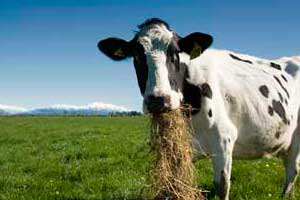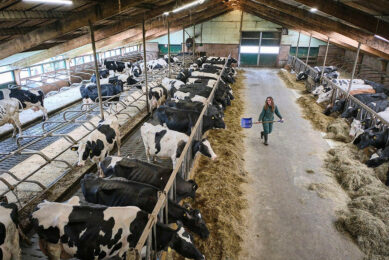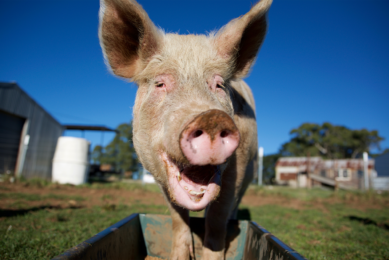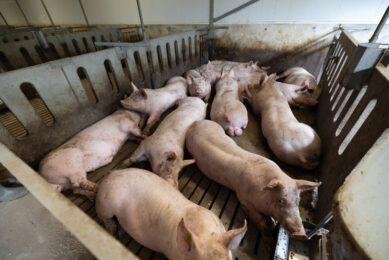Guidelines on managing acidosis in dairy cows

There’s growing evidence that modern ryegrass swards pose a significant acidosis risk throughout the grazing season and even feeding small meals of supplementary concentrate are capable of pushing cows over the limit.
Acidosis in grazing dairy cows has been viewed predominantly as an early spring problem, when grass is particularly lush and low in fibre. However, this is no longer the case and managing the risk requires careful formulation of rations.
Two studies in particular have highlighted the potential extent of the problem. Analysis of 12 farms in Ireland covering 144 grazing cows supplemented with less than 2kg/day of concentrate showed that 11% of cows were suffering from sub-acute ruminal acidosis, 42% were at high risk and only 47% had a rumen pH within the normal range (pH >5.8). A study of 100 grazing herds in Australia produced similar results.
“That around half of the grazing cows assessed were either suffering from – or at high risk from – from sub-clinical acidosis is a concern,” states AB Vista’s Nicola Walker. “And where levels of supplementary concentrate are higher than in the studies, the incidence and risk will potentially be much greater.”
A more detailed investigation carried out in Austria monitored daily rumen pH fluctuations in cows fed either grass only, or grass supplemented with 3kg of concentrate twice daily during milking. The cows receiving concentrate showed significantly lower average rumen pH and minimum rumen pH (see graph), spent 347 minutes each day below pH 5.8 (compared with just 26 minutes in the grazing only cows) and 101 minutes below pH 5.5 (versus 3 minutes).
“Below pH 5.8, fibre digestion within the rumen starts to become impaired, and below pH 5.5 cows are generally considered to be suffering from sub-clinical acidosis,” Dr Walker continues. “That means reduced nutrient supply to the cow, lower feed intakes, falling milk and butterfat production, and an increase in the incidence of health problems, such as laminitis.
“It’s, therefore, important to monitor cows throughout the grazing season. Undigested grains and fibre in the manure – coupled with decreased butterfat levels – are indicative of poor fibre digestion due to the condition, with mucin tags also visible in the manure in extremely acidotic conditions.”
According to KW nutritionist Sean Roddy, the aim should be to limit parlour feeding when grazing to a maximum of 2kg a cow a day, ideally using a custom blend containing high fibre, low protein feeds to balance grass in the rumen. The remaining concentrate should be fed alongside a forage source (typically silage) as part of a buffer ration that’s adjusted as required through the grazing season.
“Grass is only a cheap feed if it can be utilised fully by the rumen, so stable rumen conditions that promote a good fermentation are crucial,” he states. “Grass also contains little, if any, functional fibre, so has the characteristics of a concentrate and should be treated as such in the ration.
“The extra fermentable energy needed to balance the high levels of rumen degradable protein in grass should therefore come mainly from digestible fibre feeds, such as sugar beet feed, soya hulls or the various distillers’ feeds, to buffer the rumen against acidosis. For starch, use maize meal or sodawheat that are more slowly released in the rumen, and be sure to include sufficient functional fibre to provide the ‘scratch factor’ needed for good rumen function.”
This could be in the form of a summer buffer feed ration containing 1kg a cow a day of straw – chopped to muzzle width – to provide functional fibre. Presentation is also crucial, as either over- or under-processing will significantly reduce the rumen’s ability to utilise the feed ingredients.
“Molasses-based liquid feeds should be included to reduce sorting, increase palatability and ensure sufficient intake of the buffer feed,” Mr Roddy adds. “And if acidosis risk is still high, including a live yeast can often be justified to help promote a more stable rumen environment.
“Finally, don’t be afraid to invest in additional feed volumes if grass growth slows. Maintaining dry matter intake is essential to ensure a cows’ energy requirements are met, as any shortfall will have a negative impact on cow health, fertility and milk yield throughout the rest of the lactation.”
Source: Farmers weekly











